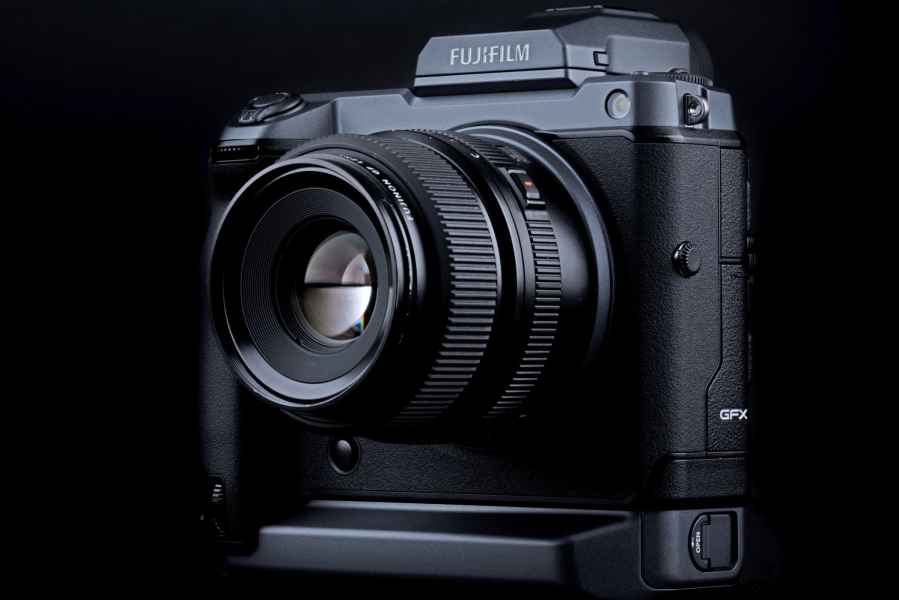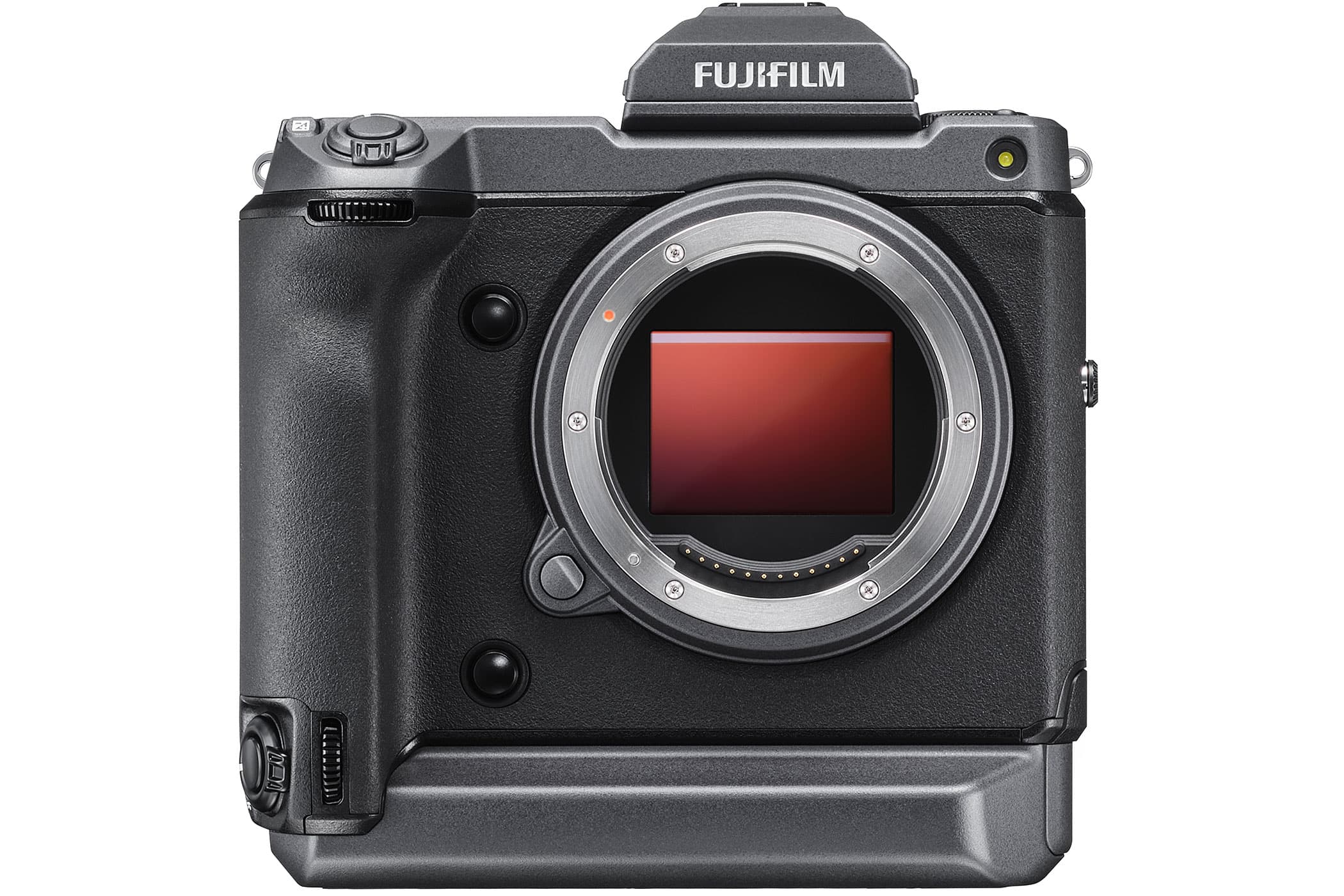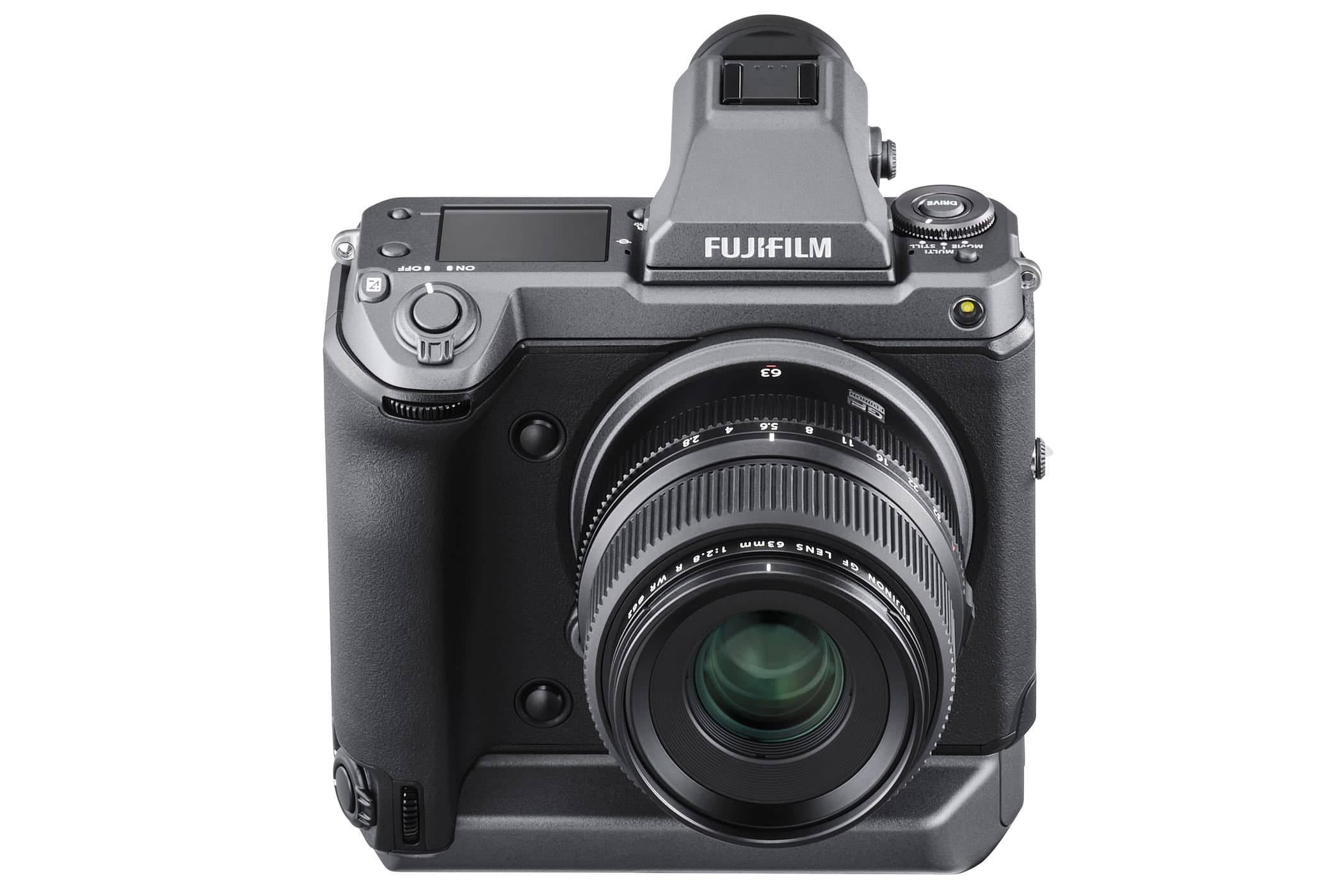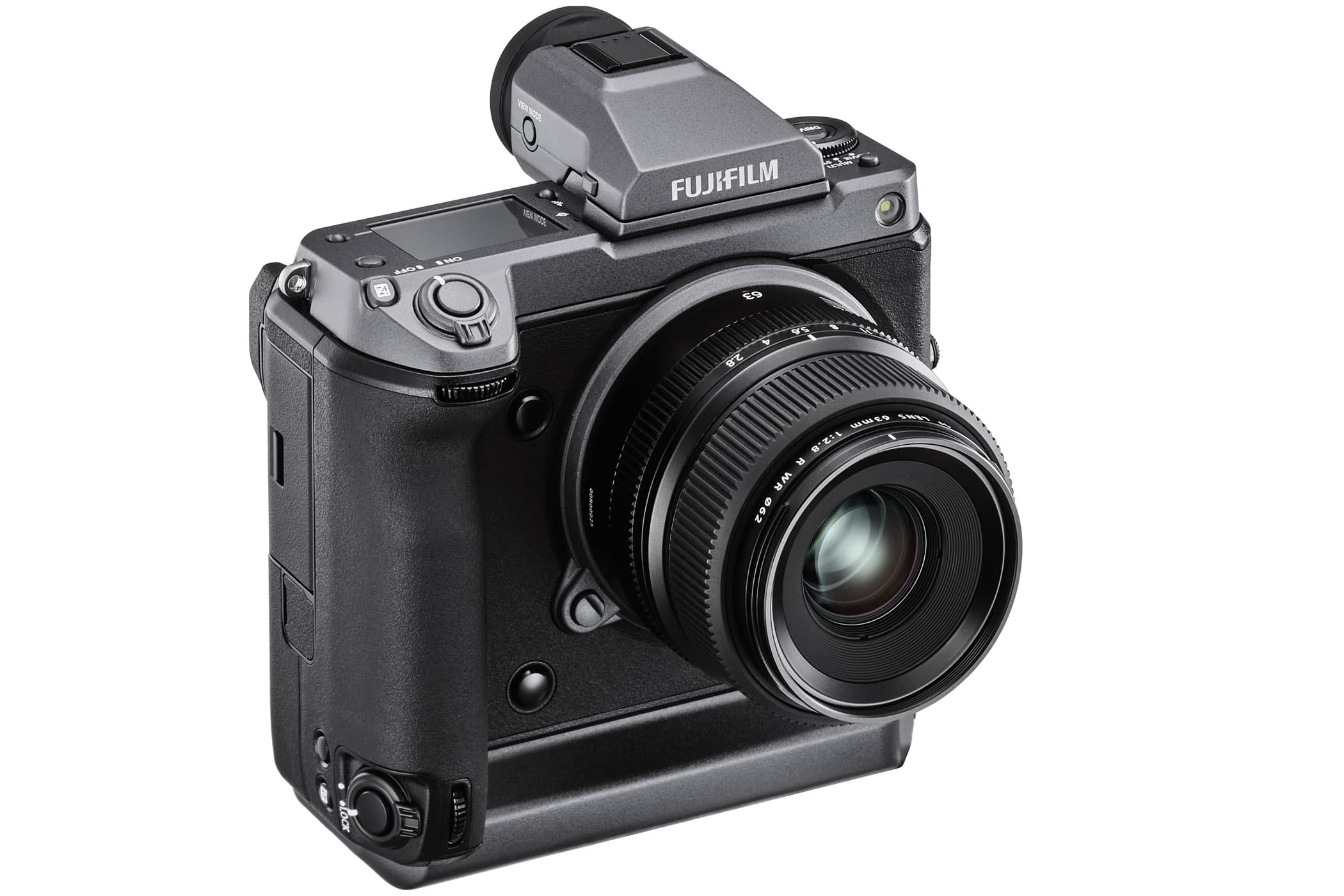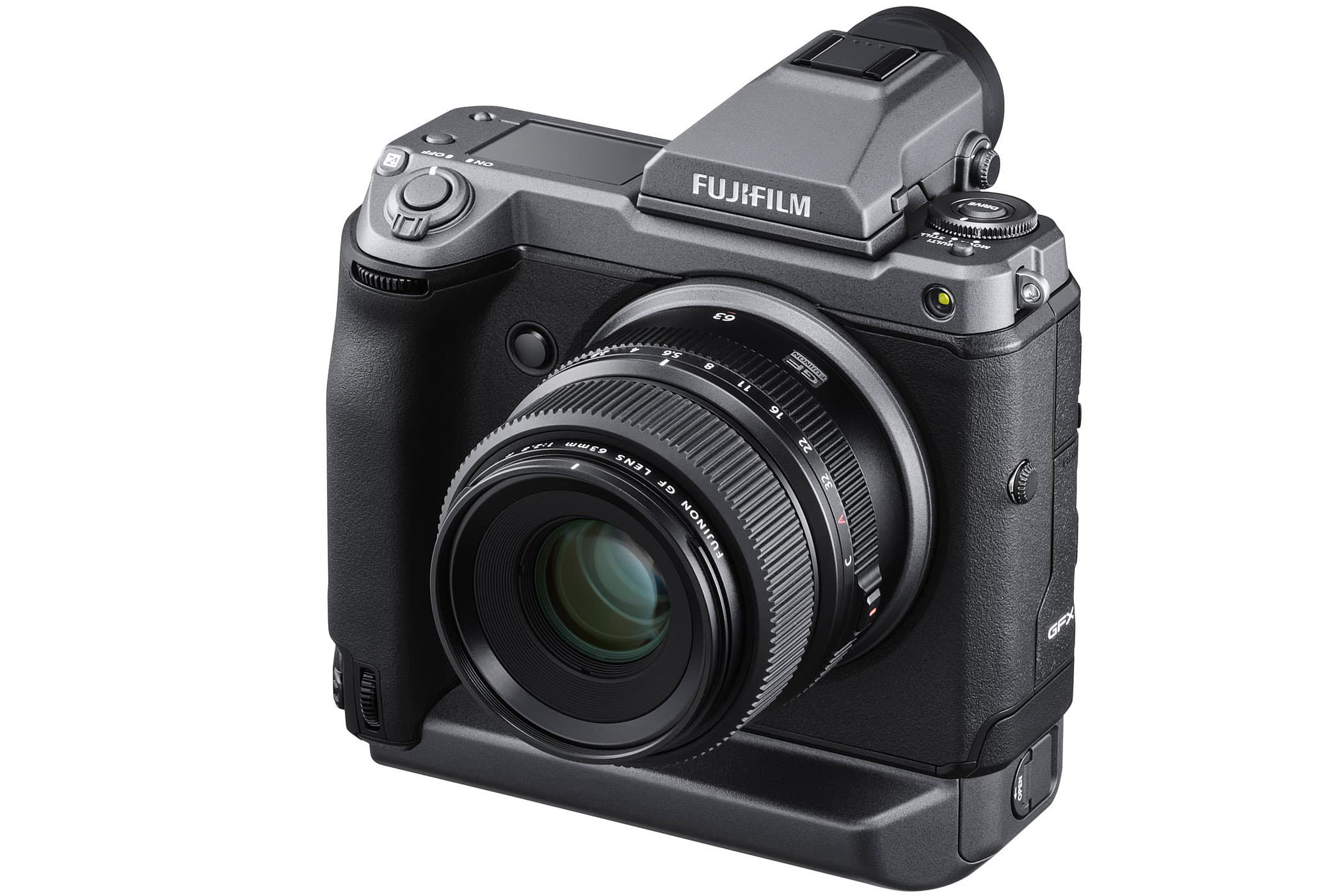Fujifilm has officially announced its high-end GFX100 medium-format camera, after initially teasing it at Photokina in September 2018. This model’s standout feature is its 102-million-pixel 43.8 x 32.9mm medium-format sensor, which is some 70% larger in area than full-frame. It also boasts 5-axis in-body stabilisation and 4K video recording.
The sensor employs a back-illuminated architecture, which Fujifilm claims should deliver lower image noise, higher dynamic range, and faster operation. To make the most of this, 16-bit raw format recording is available. Core photographic specs include a sensitivity range of ISO 100-12,800, expandable to ISO 50 – 102,400, and 5 fps continuous shooting. The sensor also incorporates 3.76-million phase detection pixels spread across the entire sensor area, promising much-improved autofocus compared to Fujifilm’s current 50MP GFX models, including enhanced face- and eye-detection AF.
To get the most from the huge resolution, Fujifilm has built a 5-axis image-stabilisation unit into the body. Along with the usual pitch and yaw angular shake movements, it can correct for rotation around the lens axis, along with vertical and sideways movements of the camera. When used with the GF 63mm F2.8 R WR lens, it’s claimed to deliver 5.5 stops of stabilisation. To further reduce the risk of image blur, the camera’s shutter unit is suspended on a set of four springs, so minimal shutter shock should be transmitted to the camera.
The camera body features an integrated vertical grip that accommodates two NP-T125 batteries, complete with a duplicate set of controls for portrait-format shooting. It measures 156.2mm x 163.6mm x 102.9mm, and weighs 1400g including batteries, which is very similar to the full-frame Nikon D5 or Canon EOS-1DX Mark II. Dual UHS-II SD card slots are used to record files.
The removeable electronic viewfinder boasts a huge 5.76-million-dot resolution and 0.86x magnification. On the back, there’s a 2.36-million-dot 3.2in tilting touchscreen that enables waist-level shooting in both portrait and landscape formats. Additional LCD status displays are found on the top-plate and lower back.
4K video recording is available at 30fps, with each frame oversampled at 50MP. Footage is recorded at 10bit 4:2:2 externally and 10bit 4:2:0 internally, using the H.265/HEVC codec. Fujifilm has included its cine-optimised Eterna Film Simulation mode, alternatively F-log allows greater flexibility for grading in post-production, while Hybrid Log Gamma is available for recording HDR footage.
In design terms, the GFX100 strikingly does away with the analogue dials that are a hallmark of Fujifilm’s other GFX-series bodies, along with most of its X-system cameras. Instead it uses pairs of electronic dials on its two grips to control exposure settings, in much the same way as other bodies with integrated vertical grips. A large dial on the top-plate switches between video and stills photography modes, allowing optimised settings to be retained for each.
The Fujfilm GFX100 is due to go on sale at the end of June, for £9999 body-only.

